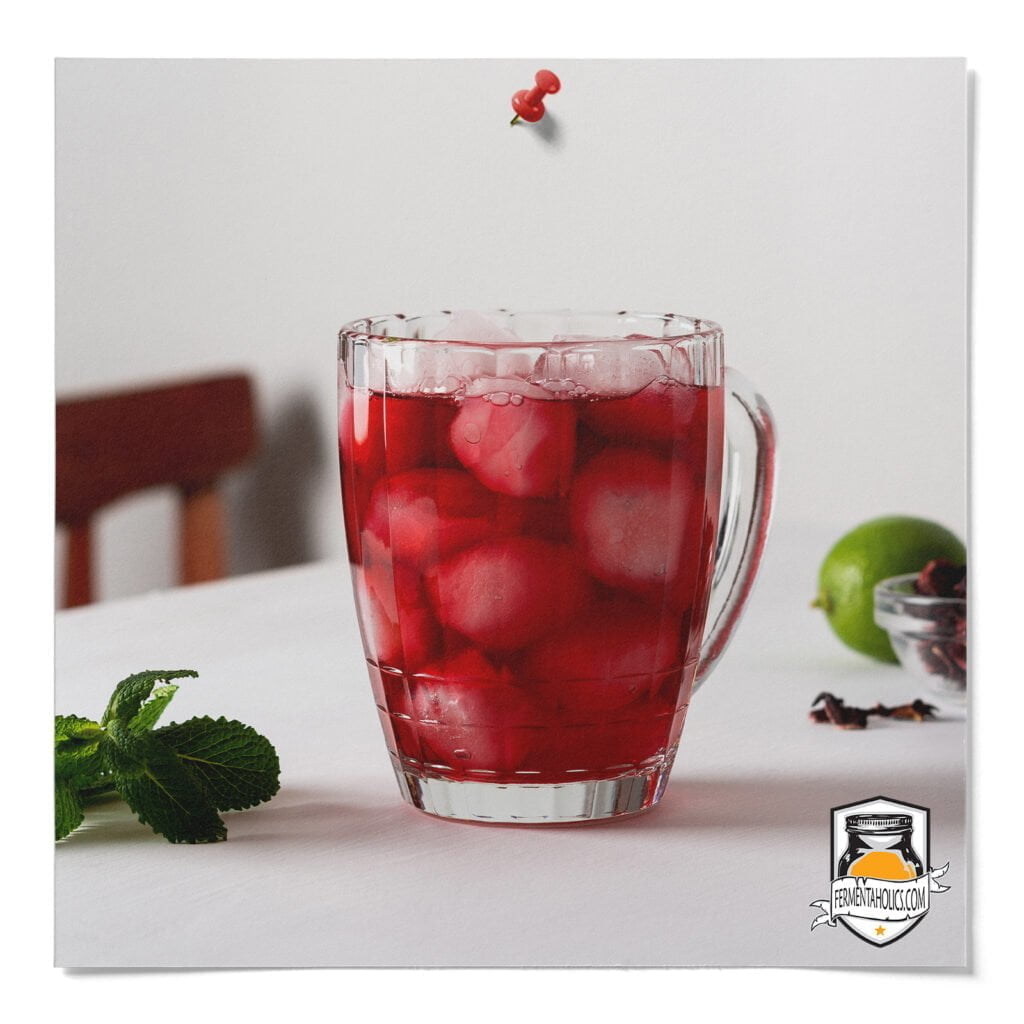
Hibiscus tea has a tart, fruity, and delightful flavor profile when comparing it to traditional kombucha. Add in the lime juice (or a squeezed lime) to balance the tart flavor- or experiment with other fruits to change the flavor to better fit your tastebuds. Hibiscus tea has a vibrant red color to it, and is usually enjoyed either hot or cold.
Hibiscus tea can either be the main tea ingredient when brewing kombucha, or it can be added during the secondary fermentation process as the main flavor for this brew. For this recipe, we will be using the tea in the secondary fermentation process.
It’s important to note that making homemade kombucha is almost always a two-step fermentation process. Brewing kombucha is only a one-step process for those who prefer an unflavored flat kombucha. Otherwise, the steps consist of a primary fermentation and a secondary fermentation.
1. Primary Fermentation: The primary fermentation is the first step of the kombucha brewing process. This is where your SCOBY transforms regular sweet tea into the tart and slightly sweet kombucha we love. At the end of this stage, you will have finished kombucha, but it will be flat and unflavored. Have you skipped this step? Then check out our guide on making kombucha at home or our guide on making jun kombucha at home. Traditional kombucha is going to yield a bolder brew, while jun kombucha is milder and a bit more tart.
2. Secondary Fermentation: The secondary fermentation is the step where you bottle, carbonate, and flavor your kombucha by the addition of sugar and flavors. This step is essentially adding a bit of sugar/flavor to each airtight bottle and letting it ferment a little longer, allowing the yeast to carbonate the beverage in an airtight environment naturally. How exactly does this happen? See our post on kombucha secondary fermentation here.
💡Since this recipe is for the secondary fermentation, to make this recipe, you’ll need to have kombucha that has finished the primary fermentation and is ready to bottle.
This recipe makes one 16-fluid-ounce bottle. A 1-gallon batch of kombucha will make seven 16-ounce bottles, so for one gallon, you will need to multiply the ingredients by 7. Before beginning this recipe, you will need to:
16 Fl Oz
Bottles20
Minutes2-10
DaysThis hibiscus lime kombucha recipe is for one 16 fluid ounce bottle. For a gallon batch, make seven bottles. To scale this recipe to a gallon batch, multiply the ingredients by seven or toggle the serving size up to seven above. Before bottling your kombucha, remove the SCOBY pellicle along with 12-16 ounces of kombucha starter tea from your brew, and reserve for your next batch.
16 Oz Kombucha from a completed primary fermentation.
1-2 TBSP Lime Juice
1 1/2 TBSP Hibiscus Tea
1 TSP Honey ( Or A Sweetener Of Your Choice)
1/2 Cup Water
16 Oz Swing Top Bottles
Measuring Spoons
Stove
Tea Ball
Bring 1/2 cup water to boil, and add in tea ball containing loose leaf hibiscus tea.
Cover the pot and let it steep for 5 minutes (the longer you steep it for the more bitter the tea will become).
Remove the liquid from the heat, and let it cool down.
Using a funnel, fill a clean bottle with brewed hibiscus tea, lime juice, and honey.
Top bottle off with kombucha, leaving about 1 to 2 inches of head-space. Tightly place the caps on each bottle.
Keep bottles at room temperature for 2-10 days; it will carbonate faster at higher temperatures and slower when cold.
Burp the bottles as necessary to release excess pressure. This is done by removing the cap to allow built-up pressure to escape then placing the cap back on.
Chill in the refrigerator once you’re happy with the carbonation levels. Based on preference, you can serve as is or strain before drinking.
